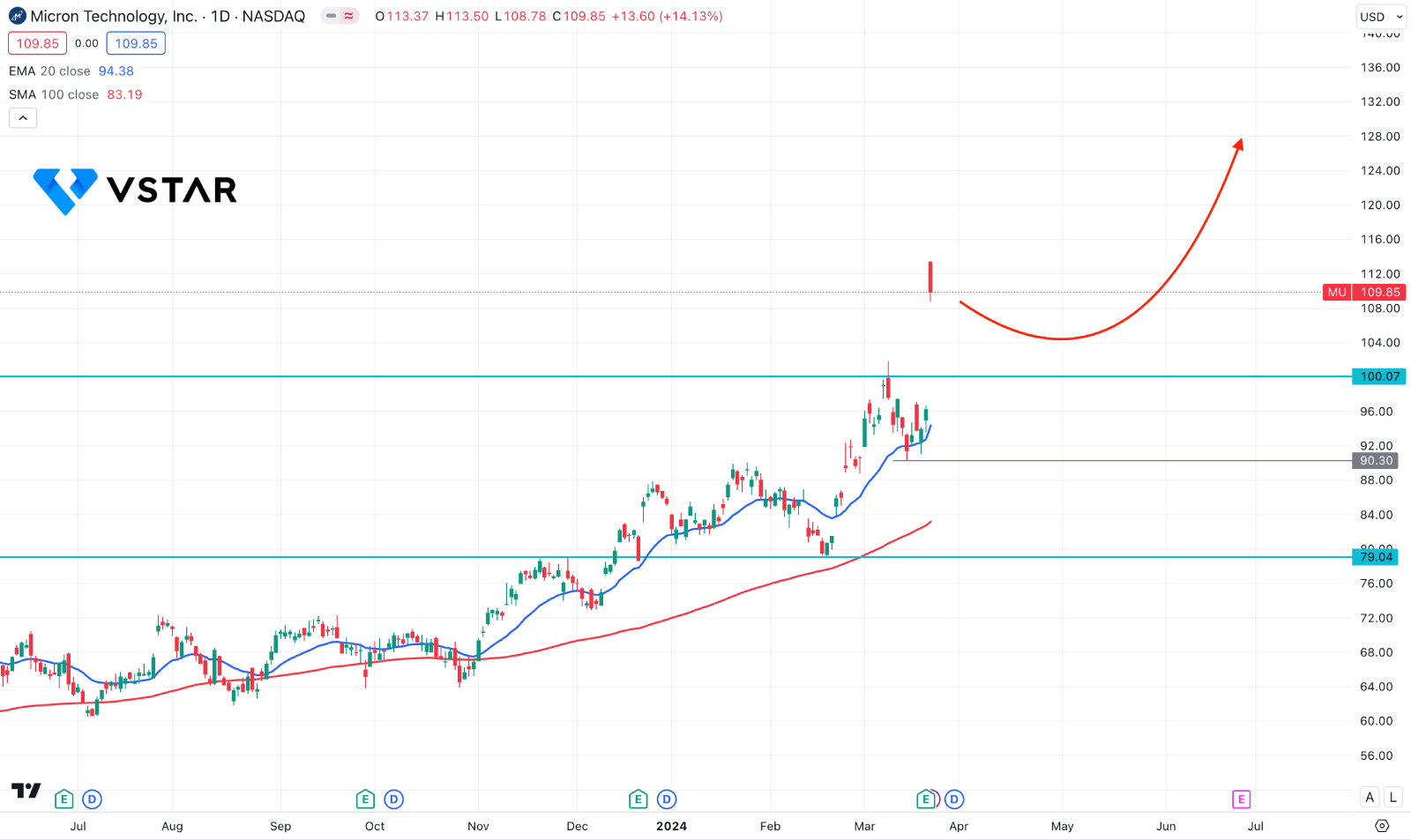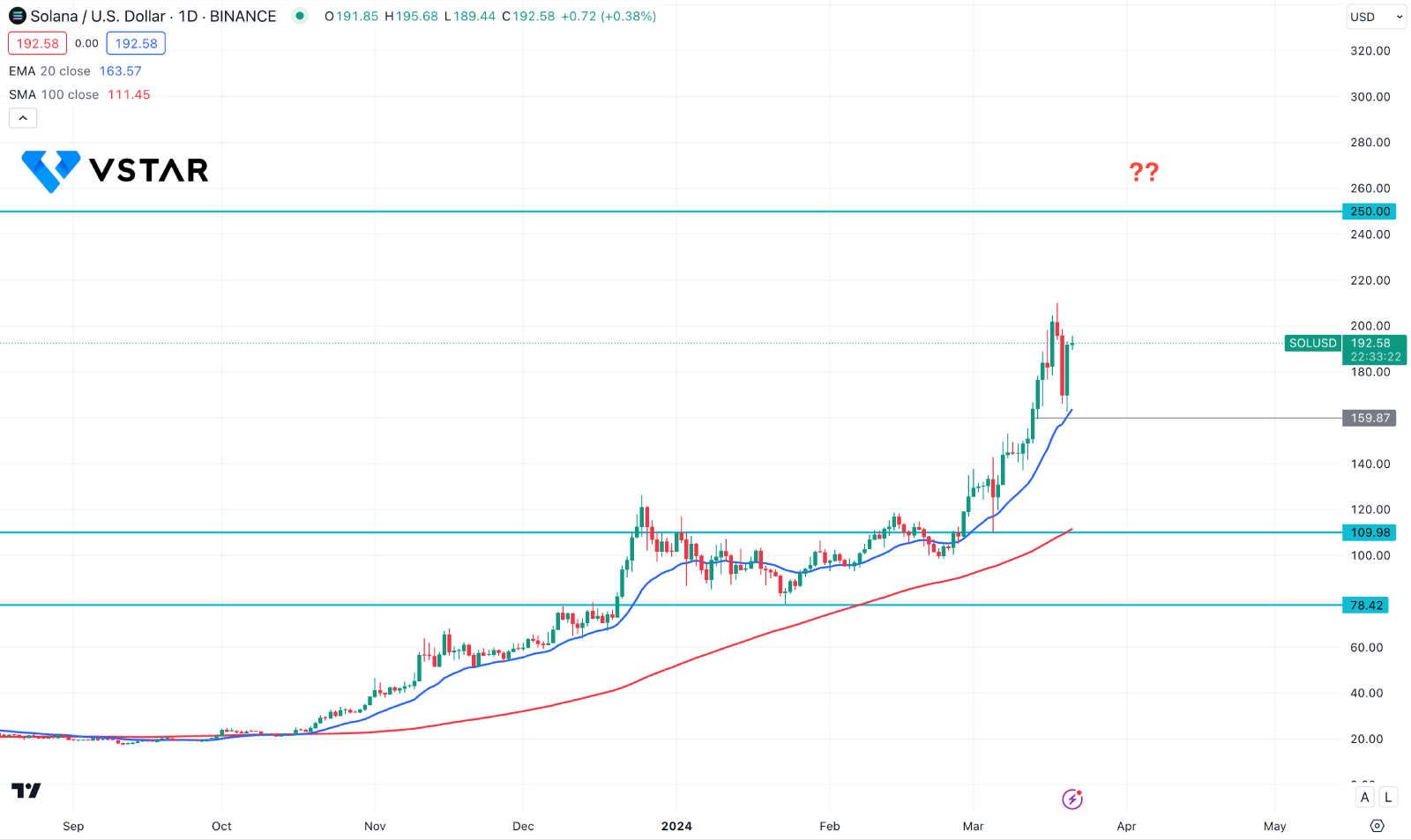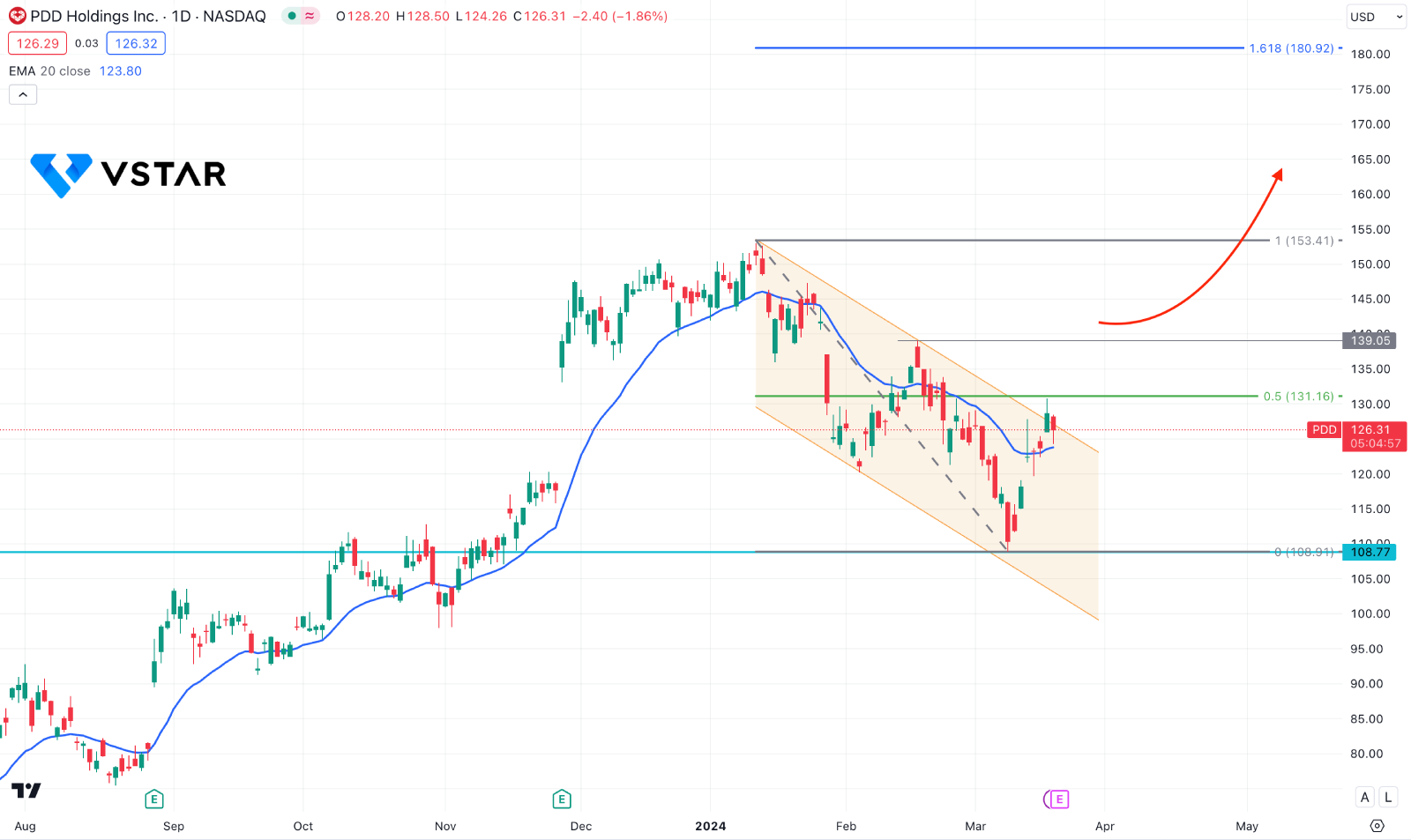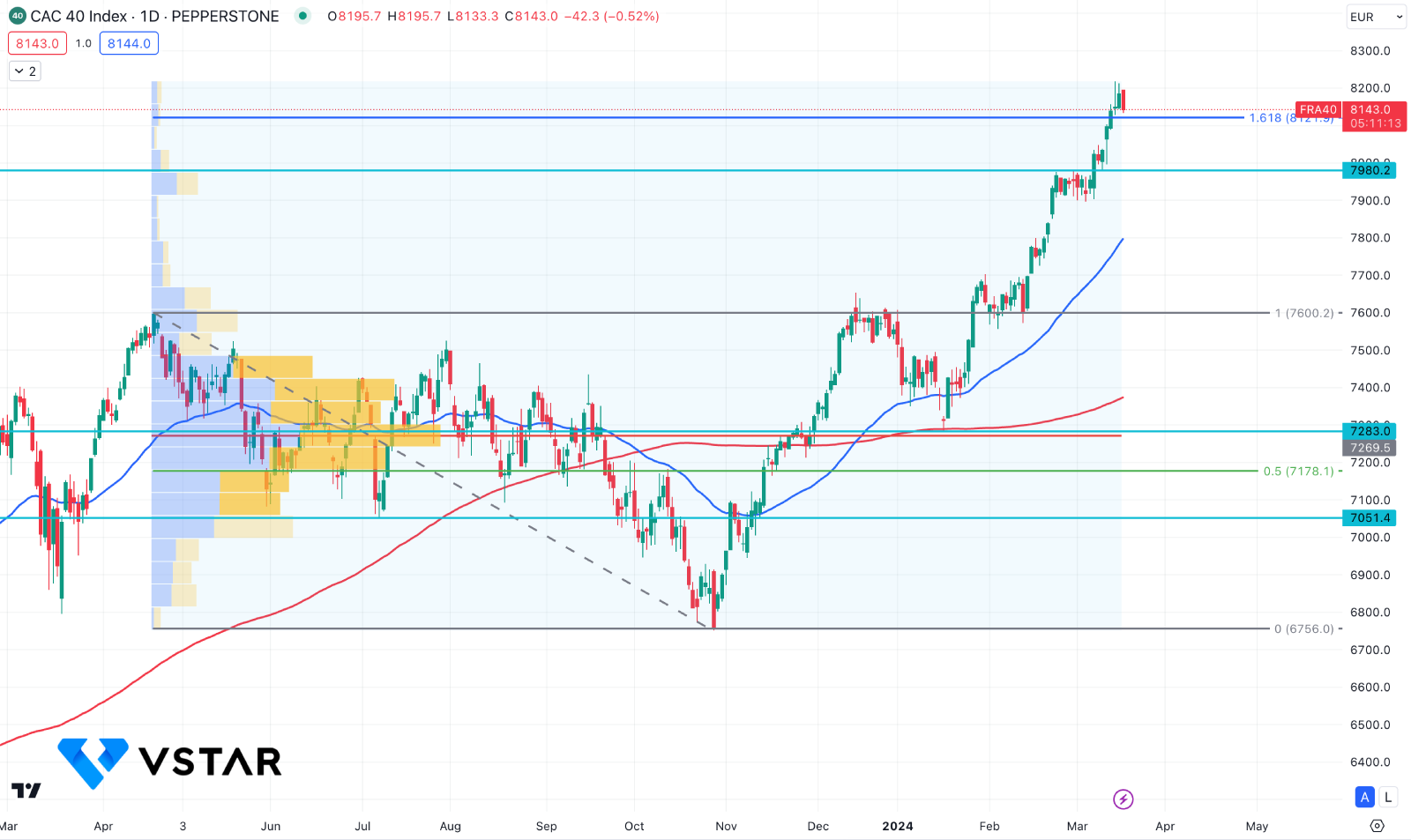The European Central Bank (ECB) established the conditions for a possible rate cut in June. Several ECB officials alluded to the potentiality of such a course of action, with the more conservative ones emphasizing the dependence on macroeconomic data. On the other hand, the strong US Dollar Index (DXY) could work as a bearish factor in this instrument.
The ECB Anticipates a Rate Cut
President Christine Lagarde reaffirmed on last Friday that policymakers expect a continued deceleration of inflation and anticipated growth in the coming months. Nonetheless, her statements were not unexpected and had little effect on the Euro's precarious condition.
Eurozone data failed to meet expectations in the interim, weakening the Euro. Flash Producer Manager Index (PMI) estimates from the Hamburg Commercial Bank (HCOB) indicated a marginal alleviation of the economic contraction in March by midweek.
However, the overall economy continued to contract. In conjunction with a minor increase in the manufacturing index and a decrease in services output, EU data indicated that the EU Composite PMI hovered at the 49.9 level.
Economic Sentiment increased domestically and across the EU, according to the March ZEW Survey of Germany. Additionally, the evaluation of the current situation experienced a modest improvement. Furthermore, the IFO Business Climate survey recorded a substantial increase of 87.8 points during the same month, surpassing initial projections.
US GDP & The Eurozone Consumer Confidence Are In Focus
On the other hand, forthcoming data releases, such as the final Q4 GDP estimate and February Durable Goods Orders, come into focus. PCE inflation figures will be released on Friday. As with January, the core PCE Price Index is anticipated to increase by 2.8% year-over-year and 0.3% month-over-month. Based on the current estimate of 62% by the CME FedWatch Tool, these figures are likely to impact the probability of a June rate cut.
There will be less activity on the economic calendar across the Atlantic. The April GfK Consumer Confidence Survey is anticipated to be released in Germany, whereas the European Commission predicts that March Consumer Confidence estimates will be available in the EU.
EURUSD Technical Analysis
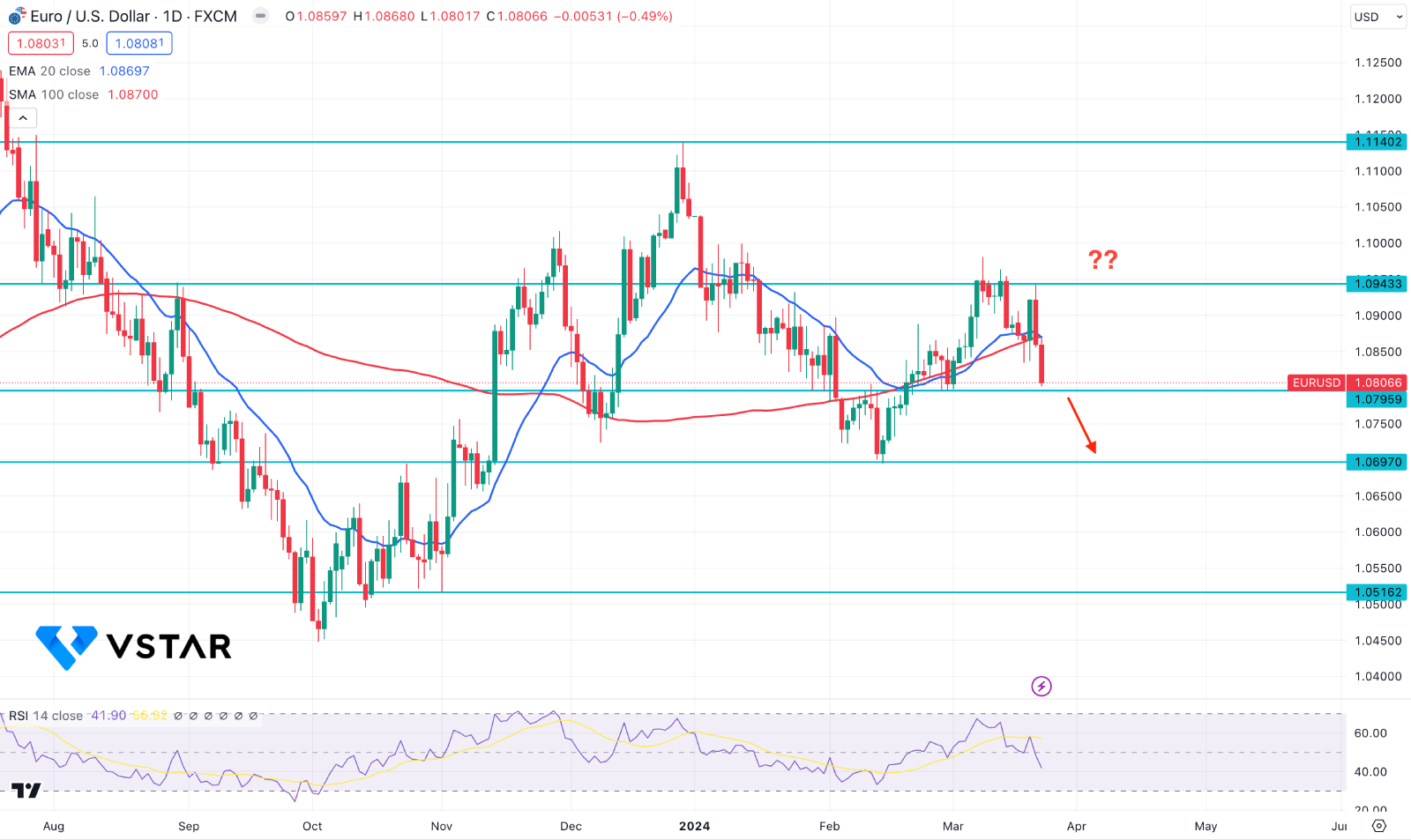
In the daily chart of EURUSD price, the long-term market trend is unclear as the recent price suggests a consolidation from December 2023. However, the most recent price showed a decent bearish pressure from the 1.0981 bottom with a bearish daily candle below the 20-day EMA.
Following the bearish momentum, the bearish pressure is potent below the 100-day Simple Moving Average level, supported by the bearish two-bar reversal. Moreover, the weekly candle closed bearish, followed by an existing bearish candle, which could suggest an ongoing bearish pressure.
Based on the daily outlook of EURUSD, a bullish correction and a bearish daily candle below the 1.0795 level could be a strong bearish signal, targeting the 1.0698 level. Below this level, the next support level is at 1.0511 level.
On the bullish side, an immediate upward pressure with a stable market above the 20-day EMA might be an upward signal, targeting the 1.1140 resistance level.

